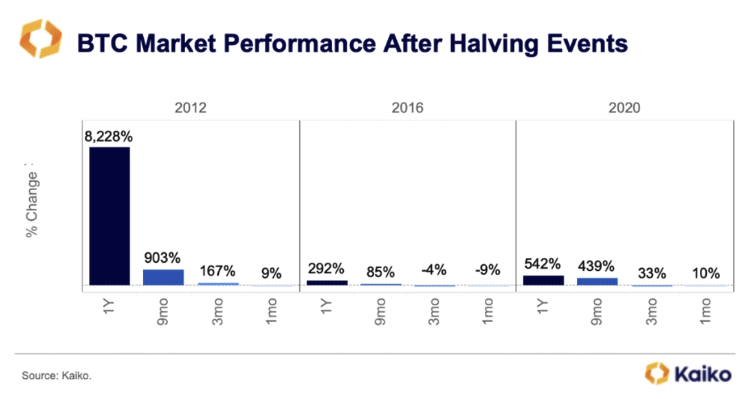The upcoming halving event for Bitcoin, now just one week away or approximately 1,000 blocks, is being tracked by The Block’s Bitcoin Halving Countdown page.
Based on Bitcoin’s average block generation time of 10 minutes, the potential date for the next halving block height of 840,000 is estimated to be around April 20 at approximately 9 a.m. UTC (5 a.m. ET). During this event, the subsidy reward for miners on the network will decrease from 6.25 BTC to 3.125 BTC per block.
Bitcoin halvings are programmed to occur every 210,000 blocks, which roughly translates to every four years. With each halving event, miners receive 50% fewer bitcoins as a subsidy reward for each block mined, though they continue to earn transaction fee rewards as usual.
Bitcoin has undergone three halving events in its history, reducing its block subsidy inflation from 50 BTC to 25 BTC in 2012, then to 12.5 BTC in 2016, and finally to 6.25 BTC at the last halving on May 11, 2020. Ultimately, there will only be 21 million bitcoins in existence.
These halving events will persist until the final bitcoin is expected to be mined around the year 2140. At that point, miners will rely solely on transaction fees for earnings.

Ahead of the halving, Bitcoin mining difficulty rose by 3.9% this week, reaching a new all-time high in the final adjustment. This increase indicates miners are boosting their hash rate in preparation for the drop in block subsidy rewards.
Bitcoin’s hash rate, which measures the total computational power dedicated to the network, achieved a new seven-day moving average all-time high of 629.75 EH/s prior to the difficulty adjustment on Wednesday, according to data from The Block’s dashboard.
While miner revenues have seen an uptick this year alongside the rise in Bitcoin’s price, the full impact of the halving on less efficient mining operations and network metrics remains to be seen following the subsidy reduction.
